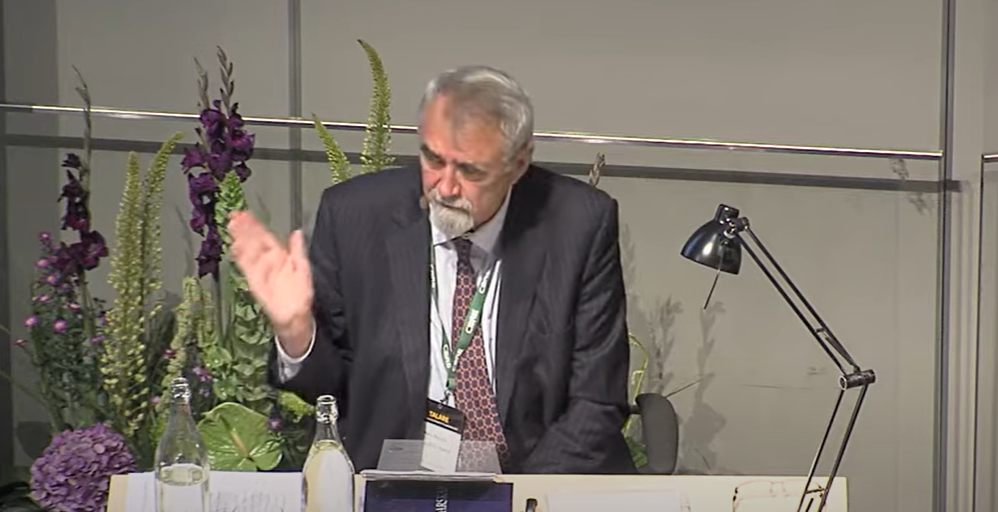Like a sprawling novel, Percy Barnevik’s career was characterized by quick ascents, difficult choices, agonizing reckoning, and, in the end, a profoundly poignant reinvention. Barnevik grew up in a routine of hard work after being born in Simrishamn and raised in Uddevalla. His parents established principles that would later reverberate in boardrooms throughout Europe and the US while operating a small printing company.
After attending the University of Gothenburg before moving to Stanford, he developed a particularly creative fusion of Silicon Valley ambition and Nordic pragmatism. When he entered the Swedish corporate scene in the late 1960s, this combination worked remarkably well. His quick rise, which began at Datema and later at Sandvik, was fueled by his reputation for making audacious hiring decisions and inspiring teams with remarkable clarity. His coworkers frequently remarked that he possessed “some kind of magic”—a persuasive power that was more akin to gravity than charisma.
As the leader of Sandvik Steel in the US, he did more than just oversee operations; he made a division a direct rival of U.S. Steel and other industry titans. He tripled revenues in four years and made a lasting impression on transatlantic business thought. His success brought him to ASEA, a Swedish industrial powerhouse, where he would go on to design a merger that is still regarded as one of the most famous in Europe.
Percy Barnevik – Bio and Career Snapshot
| Detail | Information |
|---|---|
| Full Name | Percy Nils Barnevik |
| Date of Birth | 13 February 1941 |
| Place of Birth | Simrishamn, Sweden |
| Date of Death | 18 July 2025 |
| Age at Death | 84 |
| Nationality | Swedish |
| Education | University of Gothenburg, Stanford Graduate School of Business |
| Major Roles | CEO & Chairman of ABB, Chairman of AstraZeneca, Sandvik, Investor AB |
| Organizations Founded | Hand in Hand, Hand in Hand International |
| Major Scandal | 2002 ABB pension payout controversy |
| Key Achievements | Led ABB to 87x stock growth, created millions of jobs through charity |
| Honors | IEEE Leadership Award, 7 Honorary Doctorates, Member of multiple academies |
| Cause of Death | Stroke complications |
| Reference | https://en.wikipedia.org/wiki/Percy_Barnevik |

He established ABB—Asea Brown Boveri—an industrial powerhouse that embodied global efficiency in 1987 by combining ASEA with the Swiss company Brown, Boveri & Cie. In addition to being financially successful, Barnevik’s leadership from 1988 to 1996 was revolutionary in terms of structure. ABB became a benchmark in business schools worldwide, its stock value increased 87 times, and its profits multiplied sixtyfold. Even though these numbers were astounding, they were supported by a management philosophy that prioritized speed, clarity, and decentralization.
Policymakers admired Barnevik, MBAs studied him, and Fortune 500 boards courted him during this time. His impact was not limited to Sweden. He joined the boards of AstraZeneca, General Motors, and DuPont. In addition to attending Bilderberg meetings, where leaders discreetly developed strategies behind closed doors, he provided advice to the South African government. His trademark personal touch—known for asking surprisingly straightforward but incredibly revealing questions in meetings—persisted despite his wide reach.
However, no such career is unaffected. Sweden was shocked to learn of a pension payout of 148 million Swiss francs in 2002, six years after he had resigned as ABB’s CEO. The reaction was quick. In response to widespread indignation, Barnevik resigned from high positions, including Investor AB, and returned a sizable portion of the funds. His reputation in Swedish business circles was severely damaged by the incident, which temporarily turned him from ABB’s renowned architect to a public outcast.
However, Percy Barnevik was genuinely redefined by what transpired following that scandal. Instead of retreating into solitude or luxury, he began a second, purpose-driven chapter in his life. He and Dr. Kalpana Sankar co-founded Hand in Hand in Tamil Nadu, India, in 2003. The task? End poverty by encouraging entrepreneurship rather than charity. In comparison to previous microcredit models, the approach was noticeably better. Few NGOs were able to match Hand in Hand’s scale through the integration of community engagement, capital access, and mentorship.
The program created 1.9 million jobs and spread to ten countries over the last 20 years. From Afghan villages to South African townships, the outcomes were profoundly human in addition to being quantifiable. For Barnevik, this was evolution rather than merely atonement. His conviction that independence breeds dignity became the cornerstone of all Hand in Hand initiatives.
His change in philanthropy is similar to that of leaders like Paul Polman, who led Unilever toward sustainability, or Bill Gates, who switched from software to global health. However, Barnevik’s transition felt especially intimate. After enduring scandal, he recognized the value of rebuilding trust via action rather than words.
He frequently related a funny story during interviews, stating that he was once deemed “unsuitable for management” after completing a psychological test. In spite of this, he rose to become one of the most influential CEOs in the history of modern European business. A new generation of leaders found him more relatable and even admirable as a result of this irony, which was further highlighted by his later humility and introspective demeanor.
Barnevik had developed into more than just a business strategist by the time of his death at the age of 84. He was a strong supporter of grassroots impact, a symbol of resiliency, and a case study in reinvention. His work demonstrated that leadership endures, redirected by conscience and experience, even after retirement or scandal.
Economists, activists, and executives have all expressed similar opinions in recent tributes: Barnevik was an anomaly. A man who created institutions worth billions of dollars before deciding to create futures for those who are economically marginalized. Once used in boardrooms, his tactics proved remarkably adaptable in isolated communities where establishing a small business or rearing livestock was essential to survival.
He demonstrated through calculated alliances and unwavering commitment that big ideas could be used to alleviate poverty just as successfully as they could to make money. That lesson is still relevant today, especially in the socially conscious business environment.
